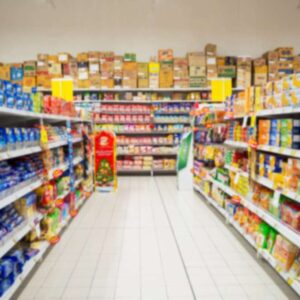
Eat Seasonally for Better Health While Helping Your Local Farmer
- Don’t waste your money on shipped and stored nutrient-less produce at the grocery store
- Forget that irradiated fruit and support your health with one easy share
- Two ways to find a consistent stream of seasonal produce
Dear Reader,
Produce is available just about everywhere these days. Supermarkets, big-box stores, and even gas stations carry anything from a red apple to a papaya year-round.
Want a pineapple in February? No problem, your local mega-supermarket will have at least a dozen on hand.
But since “Fresh is best” is the golden rule of produce… ever wonder how fresh that slightly shriveled and overly golden pineapple basking under the florescent lights of your local mega-mart actually is?
How many days, or more likely weeks, ago was it picked?
And how many planes, trains, boats, trucks, and hands did it pass through to get to your corner market?
Not to mention that even if you paid the extra to have an organic pineapple in February, how do you know it hasn’t make contact with pesticide-covered apricots? Or even one of those weird illness-causing parasites you’ve seen on the evening news?
When you think about it, there are lots of issues with this modern year-round produce availability.
There is a way to get local, seasonal, and many times organic or chemical-free produce, which I’ll get to in a bit.
But first, let’s take a peek at the problems with our current globally sourced produce supply.
That Not-So-Fresh Feeling in Your Produce Aisle
Perhaps the greatest concern about these globally traveled fruits and veggies is the lack of nutrients.
Since fruits and vegetables can be a great natural source of some vitamins and minerals when fresh, it seems counterintuitive to eat old produce for health purposes.
“If you harvest something early so that it can endure a long-distance shipping experience, it’s not going to have the full complement of nutrients it might have had,” reports Brian Halweil, author of Eat Here: Reclaiming Homegrown Pleasures in a Global Supermarket. 1
Halweil goes on to explain that fruits and vegetables traveling to faraway places often have added preservative like wax or are irradiated (shortly exposed to radiation) to preserve longevity and kill germs.
Currently, there is no science to show these practices cause health issues, but it seems like common sense to avoid produce subjected to such practices.
The other big issue with traveling produce is lack of flavor.
Once again, premature picking is the villain here. When fruits and vegetables are harvested too early, not only do their nutrients suffer, but their flavors do too.
Cookbook author and owner of French cooking school On Rue Tatin Susan Herrmann Loomis said this about the flavors of shipped produce:
“Foods lose flavor just as they lose moisture when they are held. Fresh, locally harvested foods have their full, whole flavors intact, which they release to us when we eat them. Foods that are chilled and shipped lose flavor at every step of the way — chilling cuts their flavor, transport cuts their flavor, being held in warehouses cuts their flavor.”
Additionally, when you buy from the grocery giants, you have no connection to your food.
While knowing your food source is a foreign idea for most of us these days, it can be comforting to know where your food is coming from.
Fortunately, most communities have a way for you to get fresh, seasonal, local, and typically chemical-free produce.
Sharing the Harvest
It’s called community-supported agriculture (CSA).
CSAs offer shares of a local farms’ harvest to consumers or “members.” These shares can be picked up at an agreed-upon location (typically a farmers market) or, in some cases, delivered to the member’s home or place of business.
These pickups or deliveries are typically once a week for the duration of the harvest. While harvest season varies for different parts of the country, it’s usually June–November (possibly a bit earlier or later if you live in a different climate).
The shares also come in varying sizes. A half-share works for single people or families of two, whereas a full share is better designed for three–four people. If you have a large family, you can buy multiple shares.
I was a member of a CSA last year. I was surprised at the wide variety of vegetables and fruits I would get in my share. I learned to cook new things I would have never bought on my own, like kohlrabi and French radishes.
While my CSA was very interactive with its members and provided recipes and storage suggestions with each share, you can easily find cooking ideas or ways to store your produce on the Internet.
Also, I often found myself with more than enough produce for the week, so I would freeze any leftovers. By the end of the season, I had a freezer full of vegetables, fruits, and herbs all ready to get me through the winter months — keeping me from having to rely on the grocery store!
But the best part of a CSA membership is the consistent source of nutrient-rich and flavorful foods that also support your local farmer and help the environment.
While there is no guarantee of specific produce in your shares, the farm will usually provide a harvest plan for the season.
Most CSAs I have come across are organic or chemical-free. Be sure to ask your farmer about their practices.
If you are interested in joining a CSA in your area, click here to access Local Harvest. This website will help you locate a CSA in your community and get you started on your path to local, nutrient-dense fruits and veggies!
If you can’t find a CSA in your area on Local Harvest, simply do an internet search for CSA’s in your area — that’s how I found my last one.
CSA signups have already begun in some communities, so it is important to get the ball rolling on finding a CSA that is right for you.
If you don’t think a CSA is a good fit for you, I recommend trying to buy produce from local farmers markets or vendors for the added nutrients and flavor.
If you have a CSA experience you want to share, write me! nmoore@lfb.org
Live well,

Natalie Moore
Managing editor, Living Well Daily
P.S. While seasonal produce is a better source of vitamins and minerals than globally sourced fruits and veggies, it is important to remember they are not a total source for some key nutrients — B-12, calcium, and iron to name a few. And as we discussed last week, certain vitamins are not easily absorbed from foods. Be sure you are getting these key nutrients from other foods sources or supplements.
Sources
[1] Benefits of Eating What’s in Season
Written By Natalie Moore
Natalie Moore is a dedicated health researcher with a passion for finding healthy, natural, and science-based solutions. After a decade of direct healthcare experience in western and natural medicine, she was involved in public health research before joining Living Well Daily.
View More Free Articles
Stop Obsessing Over Diet Trends
Can we stop with the endless diet debates already? Every other week there’s a new headline shouting about which diet is best for weight loss, heart health, or diabetes. Paleo, keto, low-carb, high-protein… it’s exhausting. And now, a new meta-analysis is out comparing the Mediterranean diet, the DASH diet, and something called AHEI (that’s “Alternative...
A New Reason to Ditch Processed Junk
If you’ve ever walked the inside aisles of your local grocery store and thought, “This is all just junk,” your instincts were spot on. A new study published in the journal Thorax just added another red flag to the list of dangers linked to ultra-processed food—a 41 percent higher risk of lung cancer. That’s right....
When Being Winded on Stairs Is Serious (And When It Isn’t)
I had an athlete visit me recently because he experienced shortness of breath while climbing stairs. He is in great shape, so he was worried about what it might mean. “Doc,” he said, “I run five miles three times a week. Why am I huffing and puffing after two flights of stairs?” His concern is...
Study EXPOSES Hidden Danger Lurking in Your Car
We think of our homes and cars as safe havens. But according to a startling new study, they may be flooding your lungs with microscopic plastic particles—every single day. Researchers in France recently found that adults inhale an average of 68,000 microplastic particles daily from indoor air alone. To put that in perspective, that’s about...
Mailbag: Is Modern Food Making You Snore?
“What can cause snoring, and is there a way to correct this issue?” —Seeking Silence Hi Seeking, Snoring happens when the soft tissues in your throat relax and vibrate as air passes through during sleep. While several factors can cause snoring—from sleep position to nasal congestion—I want to share one trigger that might surprise you....
Simple Food Swap SLASHES Dementia Risk 28%
Let’s be honest… who would jump at the chance to cut their dementia risk by 28 percent. And no, you don’t need to run marathons, survive on broccoli, or learn to play the zither (whatever that is) to make it happen. All it takes is one easy swap—something that’s probably already in your refrigerator. Researchers...
This SMART Floss Exposes Hidden Health Danger
Scientists have created dental floss that doesn’t just clean between your teeth—it also tracks your stress while you’re flossing. Now, I know what you’re thinking… “Great—now even flossing is going to stress me out by telling me how stressed I am.” But this fascinating new tool from Tufts University could be a game-changer for understanding...
Is This "Safe" Sweetener Damaging Your Brain?
The headlines are alarming… “Popular Sugar Substitute Linked to Brain Cell Damage” and “Erythritol Could Damage Critical Brain Barrier” are just two of the dozens I’ve spotted recently. But before you toss every sugar-free product in your pantry, let’s take a closer look at what this study actually shows—and what it doesn’t. The latest research...
This Summer Threat Could SPIKE Your Blood Sugar
Picture this… It’s another scorching hot summer day. You crank up the air conditioning while watching the weather forecast, which predicts yet another “record-breaking” heat wave. It’s starting to feel like just another miserably uncomfortable summer. But what you might not realize is that—if you have diabetes—those rising temps could do far more damage to...
Move Over Yogurt—5 Foods That Pack MORE Probiotics
Let’s talk about your gut. The microbiome is the collection of trillions of bacteria and other tiny organisms that live in and on your body—especially in your gut—and help keep you healthy. I’ve written often about how vital it is to maintain a healthy microbiome. And you might have dutifully added yogurt to your shopping...









